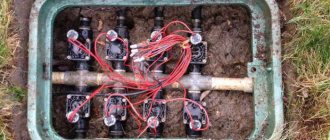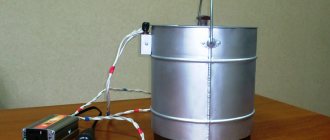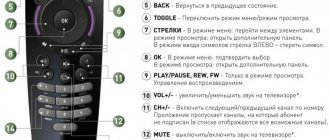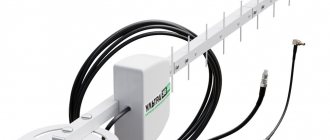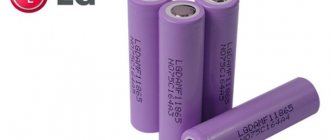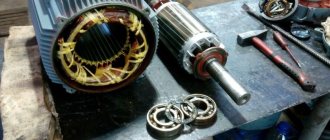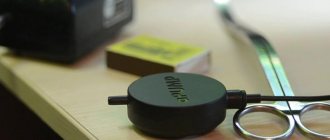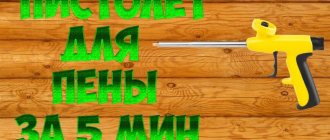Application area
Various materials are glued together with a glue gun:
- cardboard;
- ceramics;
- glass;
- plastic;
- metal, leather;
- tree;
- cork.
The pistol is indispensable in the household. Options for its use are presented in the table.
| Application | Picture |
| If a tile plate has fallen off or a piece has broken off from it, then using polyurethane glue you can quickly repair the area. | |
| When laying linoleum there is good adhesion to the base. | |
| The wood adheres well to the surface when installing skirting boards. | |
| As a hobby, needlewomen create all kinds of patterns. | |
| The fabrics are well connected with melted glue. | |
| Using this glue, rhinestones or artificial pearls are attached. Dye is first added to it. |
What it is?
A glue gun is a hand-held device, the basis of which is to heat polyurethane glue to a temperature of 90–100 degrees. At the back there are cylindrical rods of different calibrations. They create heating of the device. The rod is placed in a special chamber, bypassing all other passing elements. Heating occurs in this chamber.
High temperatures give the rod adhesive and penetrating properties. The whole process takes only 3–5 minutes. The rod begins to work when the trigger is pressed. The operating principle is similar to the functioning of a piston. Pressure is generated in the melting tank, and a portion of glue is released onto the surface to be finished.
Design and principle of operation
During operation, the gun is held by the handle. On top is the barrel, which includes all the elements of the device.
When the device is turned on, the heating element located in the heating chamber is heated. A heating stick touches it, which melts at a temperature of 105-210 degrees. With its further supply, excess pressure is created, and the molten glue is pushed out through the nozzle.
Body and handle of the product
The handle is hollow. Only wires pass through it, and a trigger is installed on the side. The housing houses the entire device. It is made of plastic with a low degree of thermal conductivity. This is due to heating of internal parts.
The weight of the device is 300 g. After turning it on, the device should only be positioned vertically. You can’t lift it with its nose up and put it on its side. This is due to the presence of molten glue inside it.
There is a platform at the bottom of the handle, and a folding pad is fixed in front of the body. The gun is mounted on these support points.
Feeder
When you press the trigger, which can be carousel or slide, the force is transferred to the ring pusher. This structural element is in direct contact with the rod. The rotating ring grabs the rod and pulls it towards the heating element.
The ring pusher is the weak element of the system. If there is even a slight defect, the rod may slip through the ring.
Guide coupling
The part is made of heat-resistant rubber. One side of it is put on the heating chamber, and the other side is inserted with a glue stick.
The coupling performs 2 functions:
- It keeps the molten mass of glue from flowing into the body of the device.
- Creates temperature uniformity. In its absence, during downtime, the rod would begin to melt in front of the heating chamber.
This is another weak point of the pistol. If heated, the rubber may tear when trying to rotate the rod.
Heating chamber
Externally, it is a tube in which the heating element is located. Some types of devices have two heating elements built in. In this case, heating of the rod occurs not only in the end part, but also on the sides.
The performance of the equipment depends on the size of the chamber and the power of the heating elements. This design unit is the most reliable. If used correctly, the likelihood of it breaking is very small.
Nozzle
An exiting stream of glue is formed in this element. Nozzles come in direct flow and with a valve. With the first option, the heated glue moves by gravity. The dosage is ensured by the feeding mechanism. With high fluidity of the glue, it begins to come out constantly. This is a disadvantage because of its large losses.
A spring-loaded ball is built into the nozzle with a valve, blocking the hole. Opening occurs under the influence of excess pressure when the glue is heated. The channel is never completely blocked by the ball. This is so that when overheated, excess glue can leak out on its own.
A protective cap is installed on the outside to avoid burns. Depending on the type of gun, nozzles can be stationary or removable. Each nozzle has its own channel thickness. Attached with a threaded connection. Replacement is carried out only when the device is warm, otherwise the hardened glue will not allow this to be done.
Review - analysis of the cheapest 20W heat gun
I continue the series of reviews of tools for the home craftsman. In this review, we look at, disassemble and study the ancestor of 3D printers - a 20-watt glue gun. Is it really 20 watts, can 20 watts melt hot glue and what is inside it? In terms of popularity of use, the heat gun comes right behind blue electrical tape, and it’s not for nothing that the gun is also blue. You can quickly repair toys with a heat gun; it sticks well to plastic and can be used 10 minutes after gluing. You can make your own refrigerator magnets or set up a workspace by gluing a bunch of tool magnets onto a shelf. You can fix the wires in the connectors. This is a smaller version of the heat gun - for 7mm rods. There are larger options, perhaps if you need to glue a lot and often the larger option is preferable. The smaller option is completely enough for me.
The heat gun is over a year old, so it looks like this. I bought it for $5.74, the account was closed for abuse, so now in the title there is a link to the cheapest option that I found.
Purchase Confirmation
Stored in a camera box, it also contains rods and glue residues that can be reused.
The gun can stand on a surface, for this there is a stand and a cut on the handle. The stand is fixed in two positions and there are two versions of the stand, they often send either one randomly, I don’t see the difference. But I prefer to hang it or place it with the nozzle up because the glue flows. For perfectionists, there are heat guns with a valve for $10+.
On the side of the gun there is an LED indicating whether it is turned on (very convenient when the socket is broken) and a power button.
The stated power is 20 watts. I turn it on - after turning it on it immediately shows about 60 watts, the power drops quickly, I didn’t have time to take a picture of the maximum speed. After heating, consumption stabilizes at 7 watts
The glue in the gun warms up for about 5 minutes, after heating the temperature of the spout is about 130 degrees. The hot tip of the gun can be used to touch up and shape the already applied glue.
Application.
The rods come in different colors, different compositions and for different temperatures. There is a lot of water on this subject on the Internet; usually the most popular rods melt at about 100 degrees and are soft at 80. Accordingly, their scope of application is limited. It seems that information about the composition of the rod and its melting point can only be found on the packaging, if there is one. You can fix the wires in the connectors, you can simply create connectors - the temperature is low and the glue can be easily formed with wet fingers. Also, the connection with hot-melt adhesive is detachable - the parts can be heated and unstuck.
Well, let's see what's inside after several years of use. I unscrew a few screws and the gun disassembles into two halves.
Inside you can see wires, again fixed with hot glue, a key, an LED, a trigger with a rod feeding system and a rod heating chamber. There is no glue inside, the gun is clean inside. The glue in the heating chamber is heated by an element that is held in place by a spring. Pressed through some kind of piece of iron with a triangular profile.
At the entrance to the chamber there is a silicone tube, it is fixed with a spring and sealant. The output is a silicone ring. I disconnect the heating element, let's see what's inside.
It is insulated with something similar to Kapton. Several layers of insulating material. Underneath there are two plates and a piece of something that has a cold resistance of 3.7K
This heating element is quite fragile, almost crumbling in your hands.
I collect all its pieces together under the plates, fix them with Kapton, then the old insulating material and again with Kapton. The entire sandwich fits normally in its original place.
I added a temperature sensor, it warms up to 144 degrees.
Using a proprietary power regulator from Viessmann (just a triac regulator inside) you can lower the temperature of the glue. Melts at approximately 80 degrees. But I would recommend more, thinner glue sticks better.
I definitely recommend the gun. One minus of the gun is that the glue leaks if you place it with the nose down. I just put it with the nose up. Someone will buy a gun with a valve, but the glue seems to press harder because of the valve and it is several times more expensive.
Differences between glue sticks
When gluing surfaces, rods with a diameter of 7 and 11 mm are most often used.
They have the following characteristics:
- The material is characterized by high bending strength;
- The length of the rods reaches 300 mm;
- Stored at room temperature;
- Visually transparent;
- Bonds a large number of materials.
There are also varieties of flowers:
- White. Used for gluing plastic, ceramics, tiles.
- Black. Good adhesion to carpets and leather.
- Yellow. Used for gluing paper products and wood.
The following colors are available for making crafts: red, green, blue, pink. Some rods contain shiny elements - they are used for decoration.
Modification of the GlueGun 20W glue gun
I have long wanted to buy myself a small glue gun.
There is a big one, but usually, by the time it warms up, there is no need for glue. And then he lets out more drops until
will cool down. And then a convenient opportunity came up, GlueGun 20W for only 35 UAH. The
I was attracted to the pistol not only by its price, but also by its power. Its brother, for example, Intertool RT-
The 1009 is almost twice as expensive, but has half the power. Of course I assumed
that something will need to be finished off, because the price hints at this. But looking ahead
Let me tell you that I was pleased with the purchase.
So, we open the blister, and what we have:
The first impression, I tell you, is not very good. Parts are not cleared of flash. Top two
the fastenings were broken by the Chinese during assembly. The cord is short. The feed mechanism slides along
glue stick. In general, so far everything that has been noticed is negative.
However, after disassembly there were also positive aspects:
— the casting of the case is accurate and the plastic is not bad, a little thin, but enough;
-after stripping the flash, the appearance improved a lot;
— the heater and nozzle do not raise any questions.
Instead of broken racks, we drill through holes for countersunk screws. With another
We recess the nuts a little with a soldering iron.
In the tongue of the feed mechanism, use a 0.9 mm drill to make a blind recess (not all the way through) and
put a piece of paper clip in it. Once assembled, it can be bent to perfection
coupling with the rod. Extend the cord and try to glue...
Yes. Yes. that's where happiness is. Everything works as it should, heats up quickly, the nozzle is thin,
convenient, the gun itself is small, doesn’t get in the way, in short, the fish of my dreams. ©
After several rods, it was decided to check the inside of the gun. The picture is sad.
Hot glue leaked under the silicone seal and flowed into the body. Let's fix this issue with
using a spring of unknown origin, bent with pliers to the desired
diameter and placed on top of the silicone seal.
Well, the finishing touches: add a power switch to the handle and an indicator
nozzle heating. The nozzle warm-up indicator circuit uses a thermal resistance
NTC3950. At room temperature its resistance is 100 kOhm, at 100 °C about
12 kOhm. To save space and out of natural laziness, we will assemble the circuit using wall-mounted installation.
For this purpose, an operational amplifier was obtained from the bins of the Motherland, which is not too bad.
On his belly we solder the entire circuit except the power supply with SMD resistors. Extra legs
The op-amps are broken off. The necessary ones are bitten just above the body and bent inward.
The jumper (white wire) could be avoided by reversing the LED leads in
the other side. We solder the LEDs to the power pins of the op-amp right away,
so that they can be inserted into the holes of the heat gun body (pimples
LEDs must be located above the op-amp housing). While the nozzle is not warmed up
The red LED lights up, and after warming up the LED lights up green. Thermal sensor legs can be
insulate with fluoroplastic insulation, carefully removed from the MGTF wire.
If anyone needs it, the switching temperature can be adjusted by changing
resistor R5, or by soldering a trimmer instead. However, it is worth remembering that the details
circuits are under high voltage, some trimmers can
This is what it looks like assembled. Approximate time to reach heat gun mode from
room temperature is 2 minutes 15 seconds.
The actual power of the heater with ethylene vinyl acetate hot glue inside is about 6 W.
The fact is that the resistance of the heating element decreases when heated. From
What follows is that with an increase in the supply of hot-melt adhesive, the heater heats worse. Hot melt adhesive,
flowing out of the nozzle, it prevents the thermoelement from overheating and the power is stabilized somewhere
then at 6 W. Despite this, the power is quite enough for comfortable work. With more
with high-temperature glue, it will probably reach up to 20 W, which is necessary for
work. It is better not to turn it on empty - it will burn out.
Despite the cheapness, after a little modification the gun lives up to my best
Without modification, the gun will most likely also work somehow, but if you are terrified
thought about disassembling and fitting, I recommend taking the more expensive option.
In principle, from the above circuit it would be possible to make a temperature stabilizer
nozzle, but practice has shown that it is not needed for this pistol.
Source
Power selection
Depending on the power of the device, the amount of time spent melting the glue is less. However, other factors should also be taken into account. If there is a large heating chamber and low power of the heating element, heating will occur slowly. But if final heating is ensured, then energy consumption will be reduced and there will be no risk of overheating. A powerful heating element in a small chamber will not provide such savings.
If the power of professional devices is 300-500 W, then at home 30-150 W is enough. If there is a shortage of molten glue, you will have to wait for a new portion to appear. Some devices are equipped with a temperature sensor. At the beginning of operation, there is maximum heating with a power consumption of up to 200 W. Subsequently, the economy mode is activated - 15-40 W.
At home, it is better to purchase a low-power device. Within 3-5 minutes. it will warm up, and then the heating will stabilize. The pursuit of power is justified only among professional workers, where long hours of daily work are required.
Glue gun diagram
And now the melting chamber with a heating element installed on it appeared to the eye. Looks like a small jet turbine.
The clamp and thrust pad have been removed. Here is the heating element itself. I note that at the installation site it lay flat, in the center and was in direct contact with the body of the melting chamber with only one of its planes.
I unwrap the rather careless packaging - an insulator. Inside there is simply a miniature ceramic heating element and two contacts for supplying 220 volts to it.
I took a closer look at the heater and rang the two sides with a multimeter. They call, but not everywhere. The darkening visible in the photo at the bottom is present on all sides and completely covers the adjacent end side. It doesn't ring. This is a ceramic coating on top of the heating element. Designed for direct contact with the body of the heating chamber and transfer of heat generated by the heater, without placing a dielectric spacer between them. This spraying is the dielectric gasket. It became clear that the heater was installed incorrectly by the manufacturer. He was lying on his side, and was also wrapped three times in insulating material. According to the existing dimensions of the heaters, 4 of them will fit on the installation site.
Guided by common sense (as far as God has given), I began to correct the manufacturer’s “jambs”. The dimensions of the contacts were brought into line with the dimensions of the ceramic heater. Exactly in length, and 1 mm less in height.
I made a millimeter-long bend at a right angle to prevent the contact from sliding down onto the body of the heating chamber.
This is how the contacts assembled with the heater began to look (top view).
The assembly resistance (located inside the clothespin) turned out to be 6 kilo-ohms. It immediately became clear that the 20W declared by the manufacturer would not be even close to being confirmed.
Exactly according to the dimensions of the ceramic heater, I cut out two copper plates 2 mm thick. It is necessary to somehow fill the void at the installation site and take heat from the sides of the heater.
The cut was made to allow the sides to be compressed. This will add reliability in holding the heater in place and is intended to improve heat transfer.
Sectional installation diagram. In the figure there are gaps between the individual components, but in a real assembly there should not be any.
Assembly completed. The heater without a gasket stands on a designated plane (end) covered with dielectric coating, with current-carrying contacts on the sides, then four layers of mica on three sides (taken from an old burnt soldering iron), and copper plates on the sides. The seal is the insulator on the right made of asbestos. I had a piece on hand and it seemed that it would be more reliable.
Here you can see that the sides are already pressed against the copper plates and hold the entire assembly, the ceramic heater is directly in contact with the wall of the heating chamber, and the electric. contacts are far from her.
The last thing to put in place is the clamp. The junction of the wires with the contacts must be insulated with ceramic insulators or something that fully replaces them.
After assembly, the first thing I did was measure the current consumption. When turned on, within a few seconds, there is a gradual current jump of 80 - 120 - 210 mA, then a sharp jump down - 20 mA. Mains voltage 225 - 230 volts x 0.02 A = maximum 4.6 W. And on the front panel of the gun, in plain sight, there is a nameplate indicating a power of 20 W. The glue gun will actually have the stated power if you install 4 heating elements. However, let’s not dream, but rather look at the video of the heating dynamics of a correctly assembled and installed (in my opinion) heating element.
Work process
When gluing surfaces, you should work quickly, because the molten mass hardens quickly. To do this, the points to which gluing will be carried out are marked in advance.
The work process is presented step by step in the table.
| Order of steps | Description | Picture |
| 1 | The equipment is being turned on. | |
| 2 | A rod is inserted through a hole located at the back. Expected heating time is 2-10 minutes. At the same time, the housing is heated. If there is no indicator, then the readiness of the equipment is checked by touching the plastic. | |
| 3 | If after pressing the feed button a drop appears from the nozzle, then you can start working. | |
| 4 | When the trigger is pressed, the glue moves. It can be applied to the surface dotted or striped. The glued material is immediately applied to this place. | |
| 5 | Expected hardening time is up to 5 minutes. The exposed glue is cut off with a knife. After this, the gun is placed on the stand with the nozzle down. |
After the entire rod has been used up, a second one is inserted, which pushes out the remains of the first. To separate the glued surfaces, this place is well heated.
If during operation it is necessary to change the color of the rod, and the gun has already cooled down, then it is turned on for 1 minute. Then the old rod is unscrewed and the new one is charged. The remains of the old one are pushed out by pressing the trigger.
DIY glue gun upgrade
We eliminate the shortcoming of budget glue guns in terms of controlling the release of glue.
I’ll tell you separately about the heat gun. A review of them online showed prices starting from 200 rubles. up to 3000 rub. Expensive ones have bells and whistles - a temperature sensor, a switch, a stand, etc. For everyday use, it is enough to take an inexpensive one (250-300 rubles). However, long-term work with a budget gun showed a very unpleasant feature - leakage of molten glue from the loading side of the rod. Glue floods the feeder, etc. and requires disassembling the pistol (did twice). Constant monitoring and periodic switching on and off is very annoying. Buy for 3000 rub. even more.
A review of gun designs on the Internet showed the presence in the nose of the gun of a valve (a spring-loaded ball of 4 mm diameter), which prevents glue from leaking out when at rest, but is connected to the network. When the trigger is pulled, the pressure of the glue overcomes the pressure of the valve and the glue flows out. Constant on and off does not solve the problem of glue ejection from the reverse side. The pressure in the hot cavity remains high and the glue tries to come out through the loading hole. The solution to the problem is to relieve the pressure (by altering the feed mechanism) or by removing the valve. Removing the valve is a simple operation, but then the glue will constantly leak out. The solution is that the spout should rest against something that prevents the glue from leaking.
Safety rules at work
To avoid injury during work, you must adhere to the following safety rules:
- According to the instructions, the duration of continuous operation should not exceed 30 minutes. Then the device turns off and cools down.
- It is prohibited to turn on the equipment without a rod.
- The cable location should always be at the rear.
- After the gun has warmed up, do not touch the nozzle or glue. This may cause skin burns.
- It is not allowed to carry out work with wet hands or in a room with a high level of humidity.
- Upon completion of work, the device is placed on the stand in a vertical position. In a horizontal position, glue may leak into the body.
Emerging problems and solutions
The main problem in operation is the uncontrolled flow of glue, even with the trigger released.
The reasons and solutions are as follows:
- If the device does not have a thermostat, then the heating does not always correspond to the marking of the rod. In this case, it needs to be replaced. The problem is also solved by the presence of a valve in the nozzle.
- The rod is clamped. It needs to be moved back.
- There is a gap between the rod and the heater. Its diameter is made with a high degree of accuracy. If the specified size is 11.2 mm, then reduction to 11 mm is not allowed. This is a marriage. In the heating chamber, due to the pressure difference, a reverse flow of glue occurs. The defective product needs to be replaced.
- Defect in the manufacture of the pistol. During breaks between work, a plug should be inserted into the nozzle. For example, a toothpick.
Other breakdowns and their solutions:
- No glue movement. The reason is that the gun is clogged. To do this, it is disassembled and cleaned. During operation, you need to monitor the nozzle and prevent glue from sticking around it.
- If the power source is a battery, then its energy is not enough to heat the glue. In this case, the device is heated at the charging station.
- If the design is cheap, the pusher may get stuck in the softened rod. It is necessary to turn off the device to cool down.
- If it is not possible to apply a dot to the surface, the glue stretches in the form of a thread, then the rods should be placed in the refrigerator for a while.
Working with a rod without a gun
If there is a rod, in the absence of a gun, you can glue the surfaces, but the quality will be low.
There are 2 ways:
- Insert the refill into the body of the ballpoint pen. After warming up, you can start working. The disadvantages include the need for constant heating.
- Apply a drop of glue to the match near the head of the sulfur or cut off a circle of the rod, cut along the diameter to the middle and put it on the match. Then set the head on fire, the glue will melt - and you can start working.
Using a glue gun is a progressive technology. In addition to ease of use, high quality gluing is obtained. The speed of hardening is also attractive. The main thing is to properly master the art of work and comply with all safety requirements.
